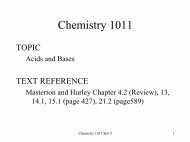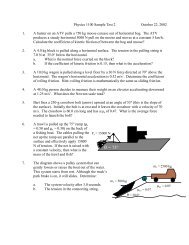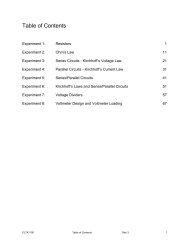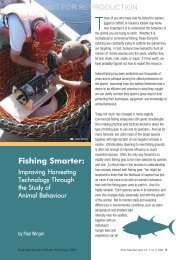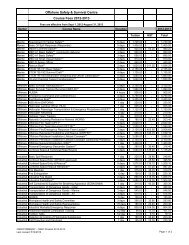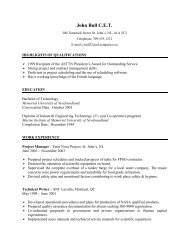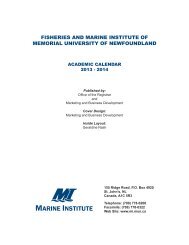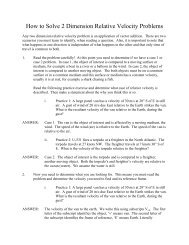Create successful ePaper yourself
Turn your PDF publications into a flip-book with our unique Google optimized e-Paper software.
These concepts are merely an outgrowth of Newton's 2 nd law. Newton's 2 nd law( F net= m × a ) stated that the acceleration of an object is directly proportional to the netforce acting upon the object and inversely proportional to the mass of the object. Whenv − v0combined with the definition of acceleration ( a = ), the following equalities result.tF Net∆v= mtIf both sides of the above equation are multiplied by the quantity t, a new equationresults.F Nett = m ∆vt = ∆pF NetTo truly understand the equation, it is important to understand its meaning in words. Inwords, it could be said that the force times the time equals the mass times the change invelocity. In physics, the quantity F Net × t is known as the impulse. Since the quantity m×vis the momentum, the quantity m×∆v must be the change in momentum. The equationreally says that theImpulse = Change in momentumIn a collision, an object experiences a force for a specific amount of time which results ina change in momentum (the object's mass either speeds up or slows down). The impulseexperienced by the object equals the change in momentum of the object. During thecollision the two objects are in contact for the same amount of time and exert equal, butopposite, forces on each other (Newton’s 3 rd Law). As a result the total momentum of thesystem is conserved.The system we wish to focus on consists of two dynamic carts that will be used torecreate various types of collisions. In some collisions, objects bounce off of each other.If no energy is used to deform the object (or produce sound or heat), these collisions aretermed elastic collisions. (In other words, if kinetic energy is conserved in a collision,then it is elastic.) In other collisions, objects still bounce, but use some of their energydeforming each other and/or producing sound. These are called inelastic collisions.Sometimes objects stick together during a collision. These are called completely inelasticcollisions. Examples of completely inelastic collisions include throwing silly puttyagainst a concrete wall, colliding a car with a tree, or rolling a dynamics cart into anotherdynamics cart and allowing the velcro on each to stick the carts together.Again the momentum and energy of the system are conserved in all types of collisions.However, the form of the final energy is not always easy to measure. Objects in inelasticcollisions lose kinetic energy to the energy of deformation, sound, or heat. For thisreason, we use the Law of Conservation of Momentum when examining collisions.- 44 -



